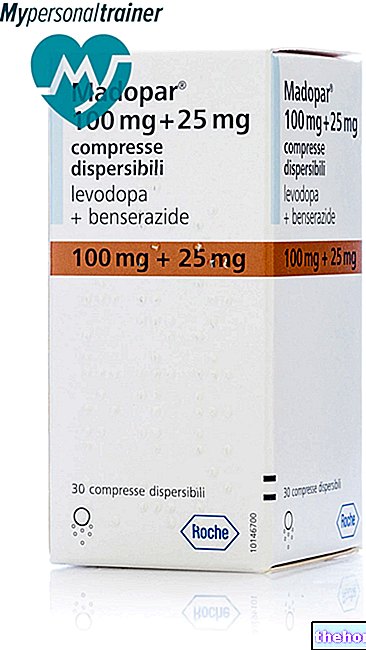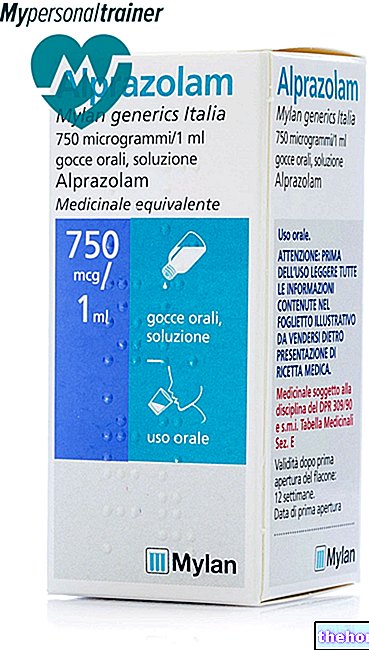Active ingredients: Flurazepam
Valdorm 15 mg capsules
Valdorm 30 mg capsules
Why is Valdorm used? What is it for?
PHARMACOTHERAPEUTIC CATEGORY
Benzodiazepine with hypnotic action.
THERAPEUTIC INDICATIONS
Short-term treatment of insomnia.
Benzodiazepines are indicated only when insomnia is severe, disabling and subjects the subject to severe discomfort.
Contraindications When Valdorm should not be used
Myasthenia gravis. Hypersensitivity to benzodiazepines. Severe respiratory insufficiency. Severe hepatic insufficiency. Sleep apnea syndrome.
Precautions for use What you need to know before taking Valdorm
Tolerance:
Some loss of efficacy to the hypnotic effects of benzodiazepines may develop after repeated use for a few weeks.
The use of benzodiazepines can lead to the development of physical and psychological dependence on these drugs. The risk of dependence increases with dose and duration of treatment, and is greater in patients with a history of drug or alcohol abuse.
Once the physical dependence has developed, the abrupt termination of treatment will be accompanied by withdrawal symptoms.
These can consist of headache, body aches, extreme anxiety, tension, restlessness, confusion and irritability. In severe cases the following symptoms may occur: derealization, depersonalization, hyperacusis, numbness and tingling of the extremities, hypersensitivity to light, noise and physical contact, hallucinations or seizures.
Rebound insomnia and anxiety: A transient syndrome in which symptoms leading to treatment with benzodiazepines recur in an aggravated form may occur on discontinuation of treatment. It may be accompanied by other reactions, including mood changes, anxiety, restlessness or disturbances As the risk of withdrawal or rebound symptoms is greater after abrupt discontinuation of treatment, a gradual decrease in dosage is suggested.
Duration of treatment:
The duration of treatment should be as short as possible (see Dose, Method and Time of Administration), and should not exceed four weeks, including a gradual withdrawal period.
Extending therapy beyond these periods should not occur without reassessment of the clinical situation. It may be helpful to inform the patient when treatment is started that it will be of limited duration and to explain precisely how the dosage should be progressively decreased.
It is also important that the patient is informed of the possibility of rebound phenomena, thus minimizing anxiety about these symptoms should they occur upon discontinuation of the drug.
There is evidence that, in the case of benzodiazepines with a short duration of action, withdrawal symptoms may become manifest within the dosing interval between doses, particularly for high doses.
When using benzodiazepines with a long duration of action such as flurazepam it is important to warn the patient that abrupt change to a benzodiazepine with a short duration of action is not recommended, as withdrawal symptoms may occur.
In case of prolonged treatment it is advisable to check the blood picture and liver function.
Amnesia:
Benzodiazepines can induce anterograde amnesia. This occurs most often several hours after ingestion of the drug and, therefore, to reduce the risk it should be ensured that patients can have an uninterrupted sleep of 7-8 hours (see Side Effects).
Psychiatric and paradoxical reactions:
When benzodiazepines are used it is known that reactions such as restlessness, agitation, irritability, aggression, disappointment, anger, nightmares, hallucinations, psychosis, behavioral changes can occur. Should this occur, the use of the medicinal product should be discontinued. These reactions are more frequent in children and the elderly.
Specific patient groups:
Benzodiazepines should not be given to children without careful consideration of the actual need for treatment; the duration of treatment should be as short as possible. The elderly should take a reduced dose (see Dose, Method and Time of Administration). lower dose is suggested for patients with chronic respiratory insufficiency due to the risk of respiratory depression. Benzodiazepines are not indicated in patients with severe hepatic insufficiency as they can precipitate encephalopathy. Benzodiazepines are not recommended for the primary treatment of psychotic illness.
Benzodiazepines should not be used alone to treat depression or anxiety associated with depression (suicide can be precipitated in such patients). Benzodiazepines should be used with extreme caution in patients with a history of drug or alcohol abuse.
Interactions Which drugs or foods can modify the effect of Valdorm
Concomitant intake with alcohol should be avoided. The sedative effect may be enhanced when the medicinal product is taken in conjunction with alcohol. This adversely affects the ability to drive or use machines.
Association with CNS depressants: the central depressive effect may be enhanced in cases of concomitant use with antipsychotics (neuroleptics), hypnotics, anxiolytics / sedatives, antidepressants, narcotic analgesics, antiepileptics, anesthetics and sedative antihistamines.
In the case of narcotic analgesics, an increase in euphoria can occur, leading to an increase in psychic dependence.
Compounds that inhibit certain liver enzymes (especially cytochrome P450) may increase the activity of benzodiazepines. To a lesser extent, this also applies to benzodiazepines which are metabolized only by conjugation.
Warnings It is important to know that:
USE DURING PREGNANCY AND BREASTFEEDING
Do not administer in the first trimester of pregnancy.
If the product is prescribed to a woman of childbearing age, she should contact her doctor both if she intends to become pregnant and if she suspects that she is pregnant regarding discontinuation of the medicine.
If, for serious medical reasons, the product is administered during the last period of pregnancy or during labor at high doses, effects on the newborn may occur such as hypothermia, hypotonia and moderate respiratory depression due to the pharmacological action of the drug.
Additionally, infants born to mothers who have taken benzodiazepines chronically during late pregnancy may develop physical dependence and may be at some risk for developing withdrawal symptoms in the postnatal period. Since benzodiazepines are excreted in breast milk, they should not be given to breastfeeding mothers.
EFFECTS ON THE ABILITY TO DRIVE AND ON THE USE OF MACHINES
Sedation, amnesia, impaired concentration and muscle function can adversely affect the ability to drive and use machines. If sleep duration has been insufficient, the likelihood of impaired alertness may be increased (see Drug interactions and others).
Dosage and method of use How to use Valdorm: Dosage
Treatment should be as short as possible. The duration of treatment generally ranges from a few days to two weeks, up to a maximum of four weeks, including a gradual withdrawal period.
In certain cases, extension beyond the maximum treatment period may be necessary; if so, it should not take place without reassessment of the patient's condition.
Treatment should be started with the lowest recommended dose. The maximum dose should not be exceeded.
1 capsule of 30 mg in the evening, before going to bed, is usually the optimal dose for adults.
The 15 mg capsule is recommended, at least initially, for people who are particularly sensitive to drugs, such as adolescents, the elderly and the debilitated.
It is recommended to check the patient regularly at the start of treatment to decrease the dose or frequency of intake if necessary to prevent overdose due to accumulation.
Overdose What to do if you have taken too much Valdorm
As with other benzodiazepines, an overdose is not expected to be life-threatening unless concomitant other CNS depressants (including alcohol) are taken.
In the treatment of overdose of any drug, the possibility that other substances have been taken at the same time should be considered.
Following an overdose of oral benzodiazepines, vomiting should be induced (within one "hour) if the patient is conscious or gastric lavage with respiratory protection undertaken if the patient is unconscious.
If no improvement is observed with stomach emptying, activated charcoal should be given to reduce absorption. Special attention should be paid to respiratory and cardiovascular functions in emergency therapy.
Overdosage of benzodiazepines usually results in varying degrees of central nervous system depression ranging from clouding to coma. In mild cases, symptoms include drowsiness, mental confusion, and lethargy. In severe cases, symptoms may include ataxia, hypotonia, hypotension, respiratory depression, rarely coma, and very rarely death. "Flumazenil" can be useful as an antidote.
Side Effects What are the side effects of Valdorm
Drowsiness during the day, dulling of emotions, decreased alertness, confusion, fatigue, headache, dizziness, muscle weakness, ataxia, double vision. These phenomena occur mainly at the beginning of therapy and usually disappear with subsequent administrations, or after dosage adjustment.
Other adverse reactions have occasionally been reported including: gastrointestinal disturbances, changes in libido and skin reactions, jaundice, hypotension.
Amnesia:
Anterograde amnesia can also occur at therapeutic dosages, the risk increases at higher dosages. Amnesic effects may be associated with behavioral changes (see Appropriate precautions for use).
Depression:
A pre-existing depressive state may be unmasked during the use of benzodiazepines.
Benzodiazepines or benzodiazepine-like compounds can cause reactions such as restlessness, agitation, irritability, aggression, disappointment, anger, nightmares, hallucinations, psychosis, behavioral changes.
Such reactions can be quite severe. They are more likely in children and the elderly.
Dependence:
The use of benzodiazepines (even at therapeutic doses) can lead to the development of physical dependence: discontinuation of therapy can cause rebound or withdrawal phenomena (see Appropriate precautions for use).
Psychic dependence can occur.
Abuse of benzodiazepines has been reported.
THE PATIENT IS INVITED TO COMMUNICATE ANY UNDESIRABLE EFFECT, EVEN OTHER THAN THOSE INDICATED ABOVE, TO THEIR DOCTOR OR PHARMACIST.
Expiry and Retention
CAUTION: DO NOT USE THE MEDICINAL PRODUCT AFTER THE EXPIRY DATE INDICATED ON THE PACKAGE.
The expiry date indicated refers to the product in intact packaging, correctly stored.
Store at a temperature not exceeding 25 ° C.
Deadline "> Other information
COMPOSITION
1 capsule of Valdorm 15 mg contains as active ingredient: Flurazepam 12.62 mg (as Flurazepam monohydrochloride 13.81 mg)
1 capsule of Valdorm 30 mg contains as active ingredient: Flurazepam 25.25 mg (as Flurazepam monohydrochloride 27.62 mg)
Valdorm 15 mg capsules and Valdorm 30 mg capsules contain as excipients: Lactose, Talc, Magnesium stearate, E 171, E 172, E 127, E 132, Gelatin.
PHARMACEUTICAL FORM AND CONTENT
Pack of 30 capsules of 15 mg and 30 capsules of 30 mg.
Source Package Leaflet: AIFA (Italian Medicines Agency). Content published in January 2016. The information present may not be up-to-date.
To have access to the most up-to-date version, it is advisable to access the AIFA (Italian Medicines Agency) website. Disclaimer and useful information.
01.0 NAME OF THE MEDICINAL PRODUCT -
VALDORM CAPSULES
02.0 QUALITATIVE AND QUANTITATIVE COMPOSITION -
One capsule contains:
Excipient with known effect: lactose
For the full list of excipients see section 6.1
03.0 PHARMACEUTICAL FORM -
Capsules Oral use
04.0 CLINICAL INFORMATION -
04.1 Therapeutic indications -
Short-term treatment of insomnia.
Benzodiazepines are indicated only when insomnia is severe, disabling and subjects the subject to severe discomfort.
04.2 Posology and method of administration -
Considering the great variety of forms of insomnia treatable with Valdorm, it is advisable to adopt an individual dosage taking into consideration the severity of the insomnia and the patient's response to treatment, within dosage limits between 15 mg and 60 mg.
The usual adult doses are 15 mg or 30 mg at bedtime. It is advisable to start with 15 mg by increasing this dose, if necessary, after testing for individual reactivity. Patients with severe insomnia may require a dosage. of 30 mg, but residual waking effects associated with anxiolytic effects are more frequent at this dosage. The maximum dose should not be exceeded (no more than 60mg). If possible, treatment should be done intermittently.
Treatment should be as short as possible. The duration of treatment generally ranges from a few days to two weeks, up to a maximum of four weeks, including a gradual withdrawal period.
In certain cases, extension beyond the maximum treatment period may be necessary, in which case such extension of treatment should not occur without reassessment of the patient's condition.
Long-term chronic treatment is not recommended. Since flurazepam is a long-acting benzodiazepine, the patient should be monitored regularly to decrease, if necessary, the dose or frequency of administration in order to prevent overdose due to accumulation.
Patients who have taken benzodiazepines for a prolonged time may require a longer period during which doses are reduced. The help of a specialist may be appropriate. There is little information regarding the efficacy and safety of benzodiazepines used in the long term.
Elderly or debilitated patients
The elderly are particularly susceptible to the side effects of Valdorm. The starting dose should not exceed 15 mg. If organic brain changes are present, the Valdorm dosage should not exceed 15 mg.
Patients with impaired renal or hepatic function
The starting dose is 15 mg and in general it should not be exceeded, the dosage may need to be reduced.
Patients with chronic pulmonary insufficiency
In patients with chronic pulmonary insufficiency, the dosage may need to be reduced.
Children
Valdorm is not for pediatric use.
Method of administration
Oral use.
04.3 Contraindications -
Hypersensitivity to the active substance or to benzodiazepines or to any of the excipients listed in section 6.1. Myasthenia gravis. Severe respiratory insufficiency Severe pulmonary insufficiency. Respiratory depression. Severe hepatic insufficiency. Sleep apnea syndrome. Obsessive or phobic states. Chronic psychosis.
04.4 Special warnings and appropriate precautions for use -
The association with other psychotropic drugs requires particular caution and vigilance on the part of the physician to avoid unexpected undesirable effects from interaction. In the case of prolonged treatment it is advisable to carry out checks on the haematological picture and liver function, in order to ensure that there are no changes from the norm Patients under treatment with Valdorm, as well as with any other psychotropic drug, should refrain from consuming alcoholic beverages while under the influence of the drug, as individual reactions are unpredictable.
Tolerance :
Some loss of efficacy to the hypnotic effects of benzodiazepines may develop after repeated use for a few weeks.
Dependence :
The use of Flurazepam, like that of other benzodiazepines, can lead to the development of physical and psychological dependence. The risk of dependence increases with dose and duration of treatment; it is greater in patients with a history of drug or alcohol abuse or in patients with severe personality disorders Regular monitoring in such patients is essential, routine repeat prescriptions should be avoided and treatment should be withdrawn gradually.
Once physical dependence has developed, abrupt termination of treatment even in patients receiving normal therapeutic doses for short periods will be accompanied by withdrawal symptoms.
These may consist of depression, nervousness, mood changes, rebound insomnia, sweating, diarrhea, headache, muscle aches, extreme anxiety, tension, restlessness, confusion and irritability. In severe cases the following symptoms may occur: derealization, depersonalization, hyperacusis, numbness and tingling of the extremities, hypersensitivity to light, noise and physical contact, hallucinations or seizures. In rare cases, discontinuation of treatment following excessive dosage may cause confusion, psychotic manifestations and convulsions. reported benzodiazepine abuse.
Rebound insomnia and anxiety : a transient syndrome in which symptoms that led to treatment with benzodiazepines recur in an aggravated form may occur upon discontinuation of treatment. It may be accompanied by other reactions, including mood changes, anxiety, restlessness or sleep disturbances.
Since the risk of withdrawal or rebound symptoms is greater after abrupt discontinuation of treatment, a gradual decrease in dosage is suggested.
Duration of treatment :
The duration of treatment should be as short as possible (see 4.2 Posology and Method of Administration), and not to exceed four weeks, including a gradual withdrawal period.
Extending therapy beyond this period should not occur without reassessment of the clinical situation. It may be helpful to inform the patient when treatment is started that it will be of limited duration and to explain precisely how the dosage should be progressively decreased.
It is also important that the patient is informed of the possibility of rebound phenomena, thus minimizing anxiety about these symptoms should they occur upon discontinuation of the drug.
There is evidence that, in the case of benzodiazepines with a short duration of action, withdrawal symptoms may become manifest within the dosing interval between doses, particularly for high doses.
When using benzodiazepines with a long duration of action such as flurazepam it is important to warn the patient that abrupt change to a benzodiazepine with a short duration of action is not recommended, as withdrawal symptoms may occur.
In case of prolonged treatment it is advisable to check the blood picture and liver function.
Amnesia :
Benzodiazepines can induce anterograde amnesia. This occurs more often several hours after ingestion of the drug and, therefore, to reduce the risk it should be ensured that patients can have an uninterrupted sleep of 7-8 hours (see 4.8 Undesirable Effects). If the patient wakes up during During the period of maximum drug activity, memory may be impaired.
Psychiatric and paradoxical reactions :
When benzodiazepines are used, it is known that rare behavioral effects such as paradoxical aggressive outbursts, excitement, confusion, restlessness, agitation, irritability, aggression, disappointment, anger, nightmares, hallucinations, psychosis, behavioral changes, onset of depression with suicidal tendencies are known. Extreme care must therefore be used when prescribing benzodiazepines to patients with personality disorders. Should this occur during treatment with Valdorm, its administration should be discontinued. These reactions can be quite severe and are more common in children and the elderly.
Specific groups of patients :
Due to the highly variable individual reactivity to psychotropic drugs, the dosage of Valdorm should be set within prudent limits in elderly or debilitated patients (see section 4.2). Due to the "muscle relaxant effect c" is the risk of falls and consequent fractures in the elderly.
Elderly people should take a reduced dose (see 4.2 Posology and method of administration).
Likewise, a lower dose is suggested for patients with chronic respiratory failure due to the risk of respiratory depression. Benzodiazepines are not indicated in patients with severe hepatic insufficiency as they can precipitate encephalopathy.
In patients with hepatic insufficiency, the dosage of Valdorm should be appropriately reduced to avoid the appearance of accentuated secondary reactions.
Valdorm is not indicated in children.
Benzodiazepines are not recommended for the primary treatment of psychotic illness.
Valdorm is not indicated in patients with spinal or cerebellar ataxia.
Benzodiazepines should not be used alone to treat depression or anxiety associated with depression (suicide can be precipitated in such patients). Benzodiazepines should be used with extreme caution in patients with a history of drug or alcohol abuse.
Important information about some of the excipients
Valdorm contains lactose. Patients with rare hereditary problems of galactose intolerance, the Lapp lactase deficiency, or glucose-galactose malabsorption should not take this medicine.
04.5 Interactions with other medicinal products and other forms of interaction -
Concomitant intake with alcohol should be avoided. The sedative effect may be enhanced when the medicinal product is taken in conjunction with alcohol. This adversely affects the ability to drive or use machines.
Association with CNS depressants: the central depressive effect may be enhanced in cases of concomitant use with barbiturates, antipsychotics (neuroleptics), hypnotics, anxiolytics / sedatives, antidepressants, narcotic analgesics, antiepileptics, sedative anesthetics and antihistamines, anticonvulsants, antihypertensives and beta blockers: This enhancement is sometimes usable for therapeutic purposes.
Administration of theophylline or aminophylline may reduce the sedative effect of benzodiazepines.
In the case of narcotic analgesics, an increase in euphoria can occur, leading to an increase in psychic dependence.
Elderly patients require special supervision
When Valdorm is used in combination with antiepileptic drugs, side effects and toxicity may be more evident, particularly with hydantoins or barbiturates or combinations containing them. This requires special attention in adjusting the dosage in the initial stages of treatment.
Concomitant intake with muscle relaxants may enhance the relaxing effect of flurazepam.
It has been noted that compounds which inhibit certain liver enzymes (especially cytochrome P450) eg. cimetidine, omeprazole and disulfuram, reduce the clearance of benzodiazepines and can enhance their action; also rifampicin, known inducer of liver enzymes, can increase the clearance of benzodiazepines, modifying their activity.
To a lesser extent, this also applies to benzodiazepines which are metabolized only by conjugation.
04.6 Pregnancy and breastfeeding -
Fertility
If Valdorm is prescribed to a woman of childbearing age, she should contact her physician both if she intends to become pregnant and if she suspects that she is pregnant regarding discontinuation of the drug;
Pregnancy
There is no evidence for the safety of the drug in pregnancy or evidence from animal work that it is harmless. Therefore, Valdorm is not recommended during pregnancy, especially during the first and last trimesters, unless there are compelling reasons.
During pregnancy, the drug should be administered only in case of real need and under the direct supervision of the doctor.
If, for serious medical reasons, the product is administered during the last period of pregnancy or during labor at high doses, effects on the newborn may occur such as irregularities in the fetal heart rate, hypothermia, hypotonia and moderate respiratory depression due to the pharmacological action of the drug.
Additionally, infants born to mothers who have taken benzodiazepines chronically during late pregnancy may develop physical dependence and may be at some risk for developing withdrawal symptoms in the postnatal period.
Feeding time
There are no data available on the passage of Flurazepam into breast milk.
Since benzodiazepines are excreted in breast milk, they should not be given to breastfeeding mothers. In the event that regular intake of Valdorm is required, it is advisable to stop breastfeeding.
04.7 Effects on ability to drive and use machines -
Based on the modalities of use, dose and individual sensitivity, sedation, amnesia, alteration of muscle concentration and function that can be induced by taking Valdorm, as well as by that of other drugs of the same type of action, may adversely affect the ability to drive or use machines.If sleep duration has been insufficient, the likelihood of impaired alertness may be increased (see 4.5 Interactions with other medicinal products and other forms of interaction).
04.8 Undesirable effects -
Drowsiness during the day, dulling of emotions, decreased alertness, confusion, fatigue, headache, dizziness, muscle weakness, ataxia, double vision. These phenomena are dose related and are rare at the recommended dosage and occur mainly at the start of therapy and usually disappear with subsequent administrations within a few days, or after dose adjustment. The elderly are particularly sensitive to the effects of centrally depressant drugs. .
List of side effects
Side effects listed by frequency are reported, using the following convention:
Very common (≥1 / 10); common (≥1 / 100 to
Other adverse reactions have occasionally been reported including: gastrointestinal disturbances, changes in libido and skin reactions, jaundice, hypotension.
Amnesia:
Anterograde amnesia can also occur at therapeutic dosages of benzodiazepines, the risk increases at higher dosages. Amnesic effects may be associated with behavioral changes (see 4.4 Special warnings and precautions for use).
Depression :
A pre-existing depressive state may be unmasked during the use of benzodiazepines.
Benzodiazepines or benzodiazepine-like compounds can cause reactions such as restlessness, agitation, irritability, aggression, disappointment, anger, nightmares, hallucinations, psychosis, behavioral changes.
Such reactions can be quite severe. They are more likely in the elderly.
Dependence :
The use of benzodiazepines (even at therapeutic doses) can lead to the development of physical dependence: discontinuation of therapy can cause rebound or withdrawal phenomena (see 4.4 Special warnings and precautions for use).
Psychic dependence can occur.
Abuse of benzodiazepines has been reported.
Reporting of suspected adverse reactions
Reporting of suspected adverse reactions occurring after authorization of the medicinal product is important as it allows continuous monitoring of the benefit / risk balance of the medicinal product. Healthcare professionals are asked to report any suspected adverse reactions via the national reporting system. "Street address: www.aifa.gov.it/responsabili
04.9 Overdose -
As with other benzodiazepines, an overdose is not expected to be life-threatening unless concomitant other CNS depressants (including alcohol) are taken.
In the treatment of overdose of any drug, the possibility that other substances have been taken at the same time should be considered.
Following an overdose of oral benzodiazepines, vomiting should be induced (within one "hour) if the patient is conscious or gastric lavage with respiratory protection undertaken if the patient is unconscious.
If no improvement is observed with stomach emptying, activated charcoal should be given to reduce absorption. Special attention should be paid to respiratory and cardiovascular functions in emergency therapy.
Overdosage of benzodiazepines usually results in varying degrees of central nervous system depression ranging from clouding to coma. In mild cases, symptoms include drowsiness, mental confusion, and lethargy. In severe cases, symptoms may include dysarthria, impaired vision, dystonia, ataxia, hypotonia, hypotension, respiratory depression, rarely coma, and very rarely death. Therapy consists of the administration of the specific antagonist, flumazenil. Patients requiring this intervention should be carefully monitored in the hospital. The physician should be aware of a risk of epilepsy in association with treatment with flumazenil, especially in benzodiazepine users. long term and in cyclical overdose of antidepressants.If arousal occurs, barbiturates should not be used.
05.0 PHARMACOLOGICAL PROPERTIES -
05.1 "Pharmacodynamic properties -
Pharmacotherapeutic group: hypnotics and sedatives - benzodiazepine derivatives.
ATC code N05CD01.
Flurazepam, active ingredient of VALDORM, is a benzodiazepine characterized by sedative-tranquilizing, muscle relaxant, anticonvulsant and hypnotic activity.
Flurazepam reduces reactive voltage in response to electrical stimulation and increases the excitability threshold to stimulation of the amygdala and hypothalamus.
05.2 "Pharmacokinetic properties -
Flurazepam is rapidly absorbed from the gastrointestinal tract and is rapidly metabolised.
After oral administration of 30 mg in humans, a blood peak of about 2 ng / ml is reached between the first and second hour.
The half-life of the compound is approximately 3 hours.
The main metabolite determined in the blood: N-desalkylflurazepam, has an average life between 47 and 100 hours. The major urinary metabolite of Flurazepam is conjugated N-hydroxyethylflurazepam.
Both the metabolites and the small percentage of unmetabolized Flurazepam are excreted primarily via the urine.
The apparent volume of distribution of Flurazepam is 3.4 l / kg.
05.3 Preclinical safety data -
The LD50 was found to be 1612 mg / kg in rats and approximately 500 mg / kg in rabbits orally and 63 mg / kg in rats and 231 mg / kg in mice by the intravenous route.
Treatment of the growing rat with Flurazepam orally in food at a dose of 50 mg / kg per day for 160 days did not show any differences with the control animals for the biophysiological parameters examined.
Oral administration of Flurazepam at doses of 30 mg / kg in rats and 10 mg / kg in rabbits did not lead to impaired fertility or had teratogenic effects.
06.0 PHARMACEUTICAL INFORMATION -
06.1 Excipients -
Lactose, Talc, Magnesium stearate.
Capsule constituents: titanium dioxide E 171, iron oxide E 172, erythrosine E 127, indigo carmine E 132, Gelatin
06.2 Incompatibility "-
Not known.
06.3 Period of validity "-
60 months.
The expiry date indicated refers to the product in intact packaging, correctly stored.
06.4 Special precautions for storage -
Store at a temperature not exceeding 25 ° C.
06.5 Nature of the immediate packaging and contents of the package -
Opaque blisters packed, together with the package leaflet, in cardboard boxes.
Valdorm 15 mg capsules 30 capsules
Valdorm 30 mg capsules 30 capsules
06.6 Instructions for use and handling -
Unused medicine and wastes derived from this medicine must be disposed of in accordance with local regulations.
07.0 HOLDER OF THE "MARKETING AUTHORIZATION" -
VALEAS SPA - Chemical and Pharmaceutical Industry - Via Vallisneri, 10 - 20133 Milan.
08.0 MARKETING AUTHORIZATION NUMBER -
Valdorm 15 mg capsules - 30 capsules: AIC N. 022926012
Valdorm 30 mg capsules - 30 capsules: AIC N. 022926036
09.0 DATE OF FIRST AUTHORIZATION OR RENEWAL OF THE AUTHORIZATION -
December 1973 / May 2010
10.0 DATE OF REVISION OF THE TEXT -
September 2016




























